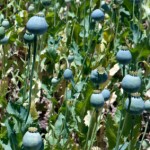I had a total knee replacement nearly twelve years ago. On the Orthopedic ward I was told I could have one or two strong pain pills every 4 to 12 hours depending on how much pain I was experiencing. Since I have a fairly high pain threshold I decided to take the minimum dose, one every twelve hours. I took the first pill, felt considerable relief from the pain, but also felt strange, so I stayed at that dose.
Then I ran into a snag. My release from the hospital depended on the degree of flexion I could achieve in the leg with the new knee. Several times a day I was hooked up to a device that gradually bent my leg. It really hurt, but I toughed it out. The nurses and the physical therapists (PT) didn't seem to communicate with each other and I was a bit slow to catch on.
"You're not making enough progress," my surgeon said. "I think we'll have to extend your stay."
Something finally clicked in my mind. I was hurting enough so the ward staff hadn't set the machines degree of flexion higher. I decided to take two of the pain pills an hour or so before the PT appeared to check my ability to have the leg bent passively.
This time I was in no pain, although I did feel weird.
"You're doing much better today," she said. "I'll tell your doc you can go home tomorrow."
I had been given a strong pain pill, probably oxycodone and they were going to give me a prescription for several weeks worth to take at home. I asked, "Can I have extra strength Tylenol instead?" I repeated that request when I had low back surgery six months later.
Since that time there's been considerable controversy about strong pain medications. The initial question was whether physicians were under-prescribing for patients with severe pain, usually cancer-related, in fear of getting them "hooked" on the drug. Subsequently there have been at least two tidal shifts in how pain medicines are viewed, one urging more treatment of pain including giving the most potent meds for chronic non-malignant pain (CNMP) as well as for cancer patents (who clearly needed to have adequate pain control and weren't always getting it).
Very recently there's been a re-evaluation of the trend. I want to go back to the basics and then follow the timeline of expert opinion that's been expressed on the subject in the last two hundred years. But I'll begin much further back than that.
A 2008 article now available online and authored by staff from the National Development and Research Institutes and from the Department of Pain Medicine and Palliative Care at New York City's Beth Israel Hospital explored the treatment of chronic pain in depth. A few comments from that article surprised me.
In Mesopotamia, nearly 5,500 years ago, Sumerian farmers cultivated a plant called Hul Gil which translates as the "joy plant." We call it the opium poppy. An August 2002 PBS special titled "Bitter Harvest" walks through how this plant is processed into the highly potent street drug, heroin, with at that time 13 million addicts worldwide The United Nations Office on Drugs and Crimes (UNODC) has a 2009 paper online estimating similar numbers. The major alklaloid (a usually colorless, complex and bitter organic chemical) in opium was isolated in 1903 and named morphine (the Greek god of dreams was Morpheus). Then the Bayer company made a chemical from morphine and gave it the brand name Heroin.
Nowadays much of the world's crop of opium poppies is grown in Afghanistan. The 2009 estimate from UNODC was for $60 billion of the worldwide total of $68 billion.
But I've strayed away from my theme, which isn't street drugs, but prescription medications, so I'll stop here and get back to the synthetic opiods in my next post..



